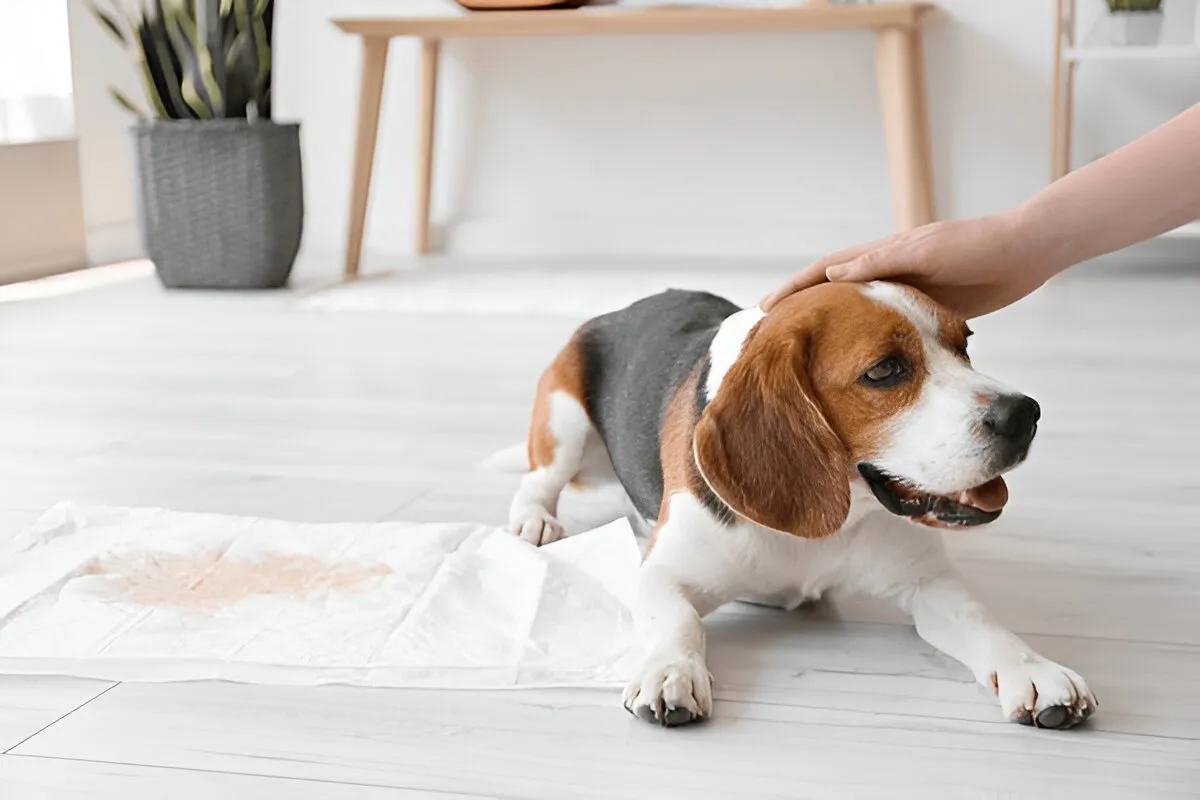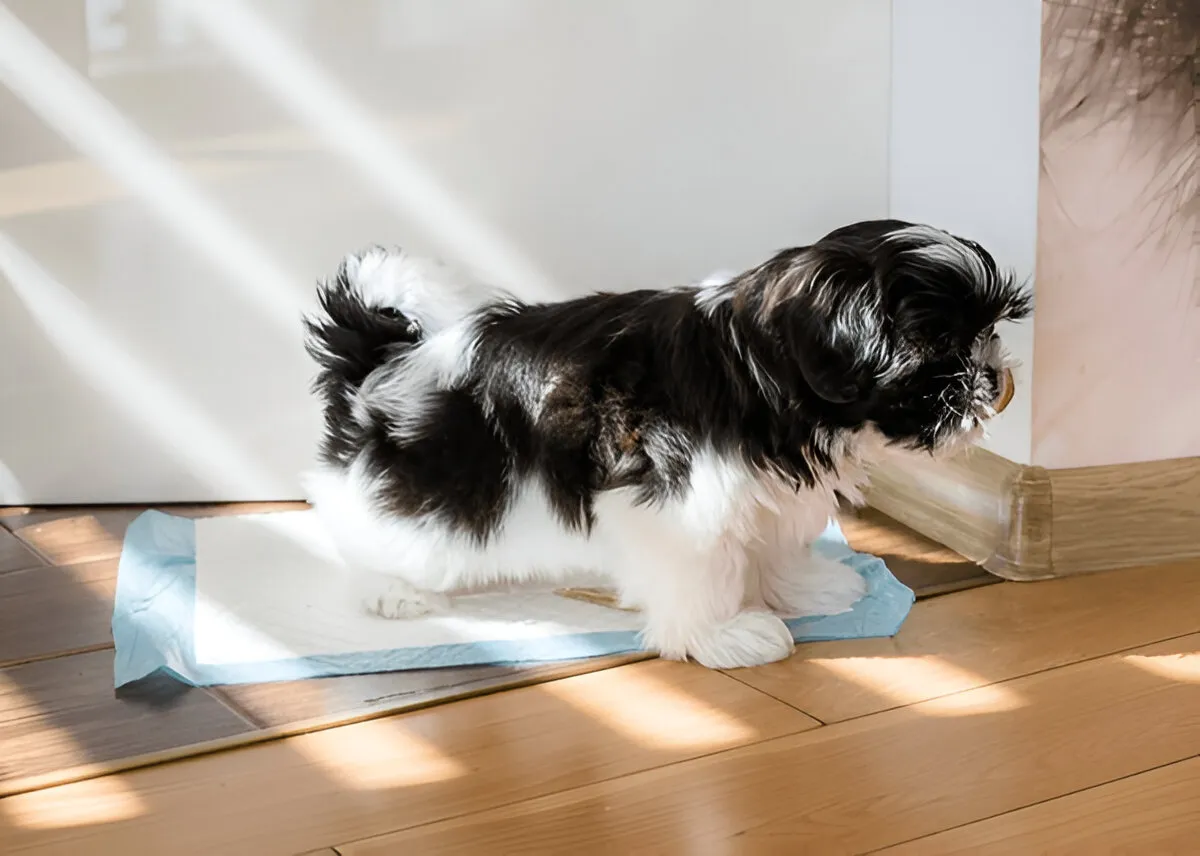
Let’s be real—bringing home a puppy sounds fun… until they poop on your new rug. That’s when it hits. We need to figure this out. And that’s where dog potty training comes in.
Don’t worry if this is your first time owning a pet or if you have not had a puppy in a long time. You can keep potty training simple and clean. But if you don’t start right, things can get tricky.
Let us make things simple: what it is, why it matters, and how to do it without losing your mind or carpet.
Why is Dog Potty Training Important for Puppies?
Dog potty training teaches your pup when and where to go. It sets up a simple daily routine and keeps your home clean. It also sets boundaries early, which makes other training methods less needed. Understanding dog behavior makes potty training simpler.
It is highly frustrating when you see mystery stains on the couch when you come back home, right? You don’t want that to happen. Then this training teaches your dog how to fit into your life, which goes beyond simple cleaning. It builds trust, strengthens your bond and significantly reduces your stress.
So… Where Do You Even Begin?
Start as soon as your puppy comes home. Seriously. Don’t wait for them to start having accidents before you begin. Puppies are like little learning machines—if you catch them early, they pick things up fast.
Make a schedule. Dog potty training works best when you start with a routine right away. Dogs (especially young ones) do better with structure. Take them out:
- First thing in the morning.
- After they eat or drink.
- After a nap.
- Before bed.
- Every 1–2 hours at first.
You’ll feel like a broken record at first, but it works. Stick with it.
How Do You Potty Train a Dog Without Losing Your Mind?

The trick is to stay patient, stick to a routine, and praise them like crazy when they get it right. No yelling. No punishment. Training accidents will happen, and that’s normal. Toilet training a dog the right way means using patience and clear routines every single day. Just lots of rewards, repetition, and timing.
One of the easiest ways to do this? Pick a “potty spot.” Every time it’s go-time, take them there. Let them sniff around. Give a command like “go potty” (keep it simple), and when they do the deed, treat time! Like, immediately.
They start to connect the dots fast. Good place + doing business = happy human = tasty snacks.
Crate Training Can Be a Game-Changer
Some people still think crates are mean. They’re not. When used right, crates are one of the best tools for housebreaking a puppy.
Dogs don’t like going potty where they sleep. When they’re in their crate, they learn to hold it, which helps them build bladder control. Make sure they can move around and lie down in the crate without trouble.
Young pups can’t hold it for more than a few hours, so plan your day around their schedule in the beginning.
Accidents Happen. It’s Normal. Seriously.
Look, training accidents are gonna happen. No matter how well you plan. One second, you’re watching Netflix, the next you hear a clatter.
Don’t panic. And whatever you do, don’t punish them after the fact. Dogs don’t understand “you peed on my rug two minutes ago.” They’ll just think you’re mad randomly.
To prevent them from returning to the same location, clean it with an enzyme cleaner. Remain peaceful. Breathe deeply. There is a new day tomorrow.
Use Positive Reinforcement or Don’t Bother
If you remember one thing, make it this: positive reinforcement wins every time.
The American Kennel Club (AKC) swears by it, and they kinda know their stuff. When your dog does something right—like going potty outside—make a big deal out of it. Give treats. Throw a tiny celebration. Use that high-pitched “good boy/good girl!” voice. Celebrating good potty habits helps them learn faster.
It builds trust and makes them want to keep doing the right thing. Harsh scolding? That just confuses them and breaks your bond.
What About Stubborn Puppies? Is That a Thing?
Oh yes. Some pups are just… a little more hard-headed than others. Easily distracted. Super excitable. Or they just flat-out don’t care.
If you feel like you’re hitting a wall, it might be time to get some outside help—like a private dog training class, a fun group dog training class, or even a more immersive option like dog board and training in Chicago. Trainers can spot stuff you might miss. Plus, dogs often do better when someone else guides them, too.
Prestige Dog Training offers all of these services. Their team knows how to make even the most stubborn pups start listening—without any yelling or stress.
Small Dogs = Small Bladders (and Bigger Challenges)

If you’ve got a toy breed, congrats! They’re adorable… and they pee every 12 minutes. Not really—but almost.
Smaller dogs have quick metabolisms and tiny bladders. It means lots of breaks and maybe some surprises on the floor. They also get cold fast. So, they can feel hesitant while going outside during bad weather.
Solution? Be extra consistent. Try indoor pads during extreme weather, and keep outings short but frequent. Oh, and patience. Lots of that.
Potty Training an Older Dog—Is It Possible?
Totally. Whether it’s a rescue or just a dog that never learned right, older pups can get trained.
You’ll follow the same rules: consistency, praise, schedule, and maybe crate time. The ASPCA (American Society for the Prevention of Cruelty to Animals) says older dogs may take a little longer to learn new tasks, but they can accomplish them with consistency and affection.
Sometimes it takes weeks, even months. And that’s okay.
Tools That Help (and Aren’t Gimmicks)
Here are a few things real pet parents swear by:
- Enzyme cleaners (don’t use regular ones—they don’t kill scent)
- Puppy bells (hang ‘em by the door, ring before every potty break)
- Timer apps (to stay on schedule)
- Potty pads (good for apartments or emergency indoor use)
- Crates (with adjustable dividers)
These aren’t magic fixes, but they support the system you’re building.
How Long Does It Take?
There’s no perfect timeline. Some dogs pick it up in a week. Others? Two or three months.
But on average, most dogs get it down in 4–6 weeks if you’re consistent. The key is repetition. And treating even small progress like a big win.
If your dog still isn’t getting it and you’ve tried everything, talk to a vet or get in touch with a puppy trainer in your area. There may be an underlying medical condition or anxiety problem.
Conclusion
Dog potty training sets clear rules so your dog can live in your home without stress. It is not just about preventing messes.
It sets the stage for everything else. A well-trained dog is a happier dog. And a happier dog? That means a happier you.
Prestige Dog Training is here to assist you if you feel stuck or prefer not to go through it alone. They will guide you without any drama, worry, or damaged rugs, whether you seek practical help or just professional advice.
All puppies deserve the best chance to learn. And every pet parent deserves a clean floor and some peace of mind.



